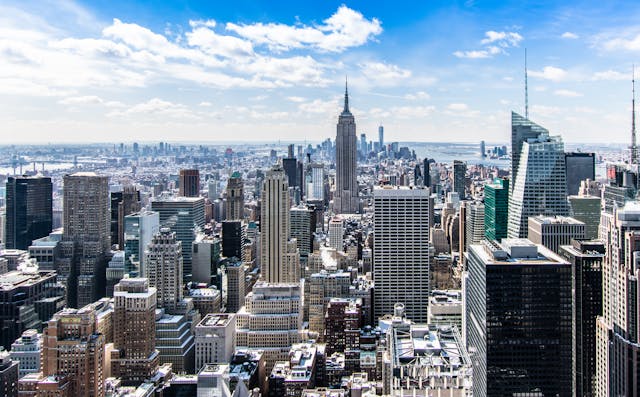
What causes a heat island? A heat island is caused by cities because they absorb more heat and produce more heat than rural areas.
Heat islands are more commonly known as urban heat islands because they happen in urban areas. Before we look at what causes them, let’s look at urban areas themselves. The first cities were formed roughly 10,000 years ago. For thousands of years, the world’s population increased at a very slow rate, being reduced by the occasional plague. Generally, from the beginning of history until the 10th century AD, it was between 200 and 400 million people. It was only in about 1400 that the population began to take off. There were several agricultural revolutions, there were improvements in medicine and sanitation, and there were improvements in education. Since the first cities, people have always wanted to move to urban areas because that is where the wealth is concentrated. The idea that if you go to the city, you will get rich is not a new one. As the world’s population increased, that meant more people moving to cities and bigger cities. That was followed by the Industrial Revolution and a sudden rush to urbanize at the expense of people’s health and living conditions. More and more people moved to the cities, and now, roughly 55% of the global population lives in cities. That is projected to increase to 68% by 2050. And as more people move to cities, the cities have to grow larger to accommodate them. Today, 3% of the Earth’s surface is urbanized. It is estimated that 43% of the Earth’s surface is habitable, so over half of the world’s population is crammed into 1.2% of the world’s habitable land.
One of the consequences of so many people living in cities is a phenomenon called an “urban heat island”. This is where the temperature is significantly higher over a city than it is in the surrounding areas. In the countryside, the temperature will rise during the daytime and then drop back down at night. In the city, the temperature rises higher in the daytime than in the countryside, and at night, it tends to stay hot, not really dropping down as the temperatures do in rural areas. This high temperature can bring a number of problems, one of which is a higher number of thunderstorms. So, what causes a heat island? It is caused by the materials the city is made of, the lack of vegetation, the shape and spacing of the buildings, and by our activities in the cities.
The biggest problem is that the majority of a city is roads. And what is left over is pretty much all buildings. It is estimated that 30% of a city is road, and that means black tarmac. The rest is mostly concrete. Black tarmac and concrete have a very low albedo, which is the amount of light reflected by a surface. Most of the sunlight that hits these surfaces is absorbed, heating them up. You might think that reflected sunlight is worse because it heats up the air over the city, but absorbed sunlight is far worse. The buildings and the roads take in the heat and then they release it back slowly, warming up the whole city. This is why the daytime temperatures are so high and why the nighttime temperatures don’t drop. There is a constant heat source.
The second problem is the lack of green areas in cities. A lot of cities have parks, but they are few and far between. Central Park in New York is an exception, but even then, the rest of the city is enormous. If there are no trees, then the black tarmac and concrete are exposed. Trees provide a lot of shade that can keep the heat off the ground. They also cool the air around them because water evaporates from their leaves, which absorbs heat energy from the environment. Trees can reduce air temperatures by 5 ℃ and ground temperatures by as much as 20 ℃. More trees are always better.
The third problem is the spacing of the buildings. A lot of cities funnel wind down large streets and there is no wind down the smaller streets. The wind can cool buildings and lower the temperature, but it is funneled away from most of the city, so there is no benefit. The buildings also act to trap heat. Large buildings are surrounded by other large buildings, and there is no way for the heat to escape.
And the fourth problem comes from us. Well, the first three problems come from us as well. All of the vehicles, machines, and devices we use produce heat. Our cars, our air conditioners, our fridges, and our computers. We add to the heat of the city, and that means we have to use more air conditioning, which adds more heat. And on it goes. And this is what I learned today.
Sources
https://www.epa.gov/heatislands/what-are-heat-islands
https://en.wikipedia.org/wiki/Urban_heat_island
https://en.wikipedia.org/wiki/Albedo
https://www.un.org/uk/desa/68-world-population-projected-live-urban-areas-2050-says-un
https://www.livescience.com/6893-cities-cover-earth-realized.html
https://en.wikipedia.org/wiki/Estimates_of_historical_world_population
https://en.wikipedia.org/wiki/Population_growth
Photo by Lukas Kloeppel: https://www.pexels.com/photo/empire-state-building-new-york-466685/
